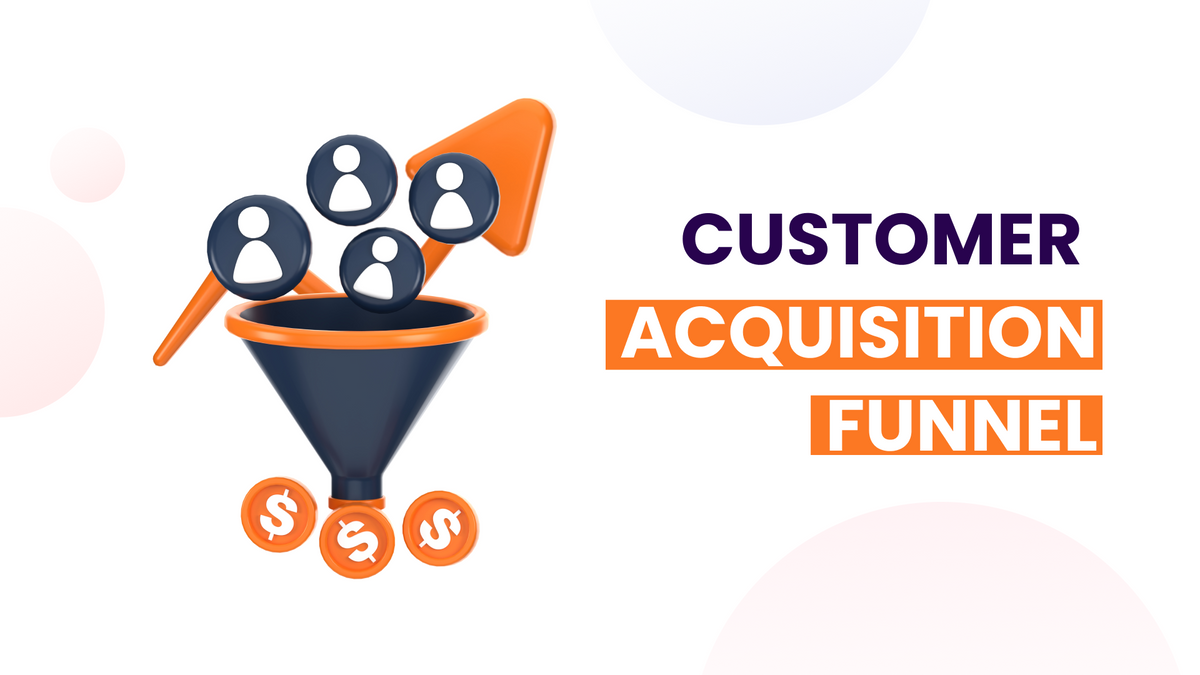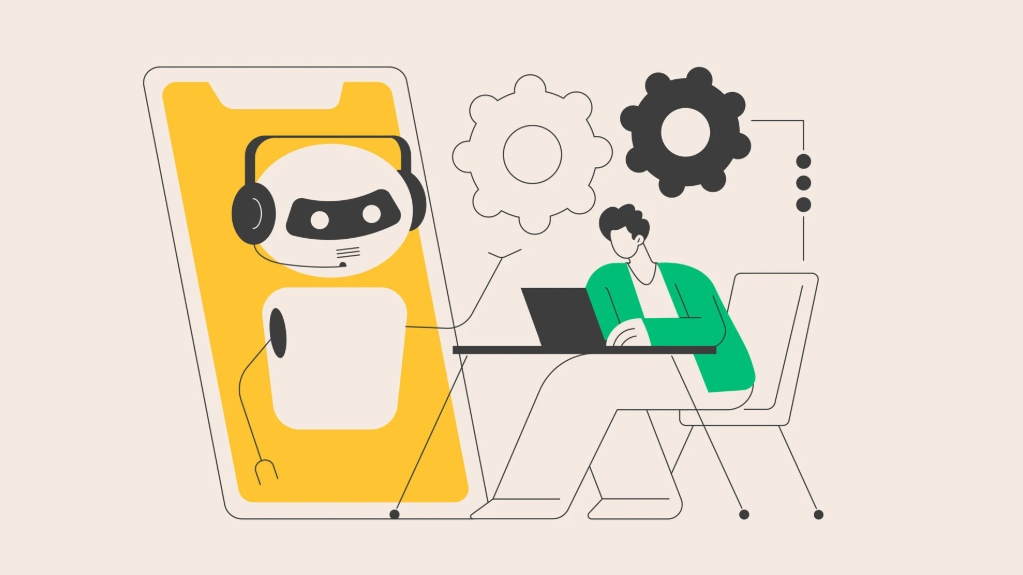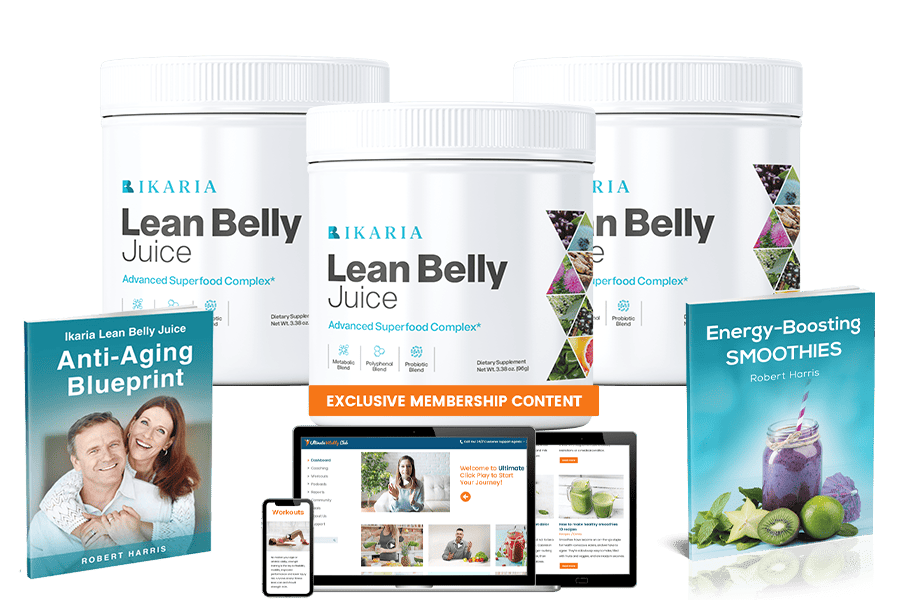Let’s dive into the customer acquisition funnel. It’s like a journey, starting from when a potential customer lands on your website and ends with them taking action, whether that’s signing up or booking a call.
Why is this journey important? By analyzing each step, you can spot where people are dropping off and figure out why. This helps you tailor your funnel to make it more effective and get more sign-ups or bookings.
In this guide, we’ll break down the customer acquisition funnel and learn how to optimize customer acquisition funnel. Let’s get started!
What is a customer acquisition funnel?
A customer acquisition funnel is a visual representation of the journey a potential customer takes from first becoming aware of a product or service to ultimately making a purchase and becoming a loyal customer. It outlines the stages prospects go through as they move closer to making a buying decision.
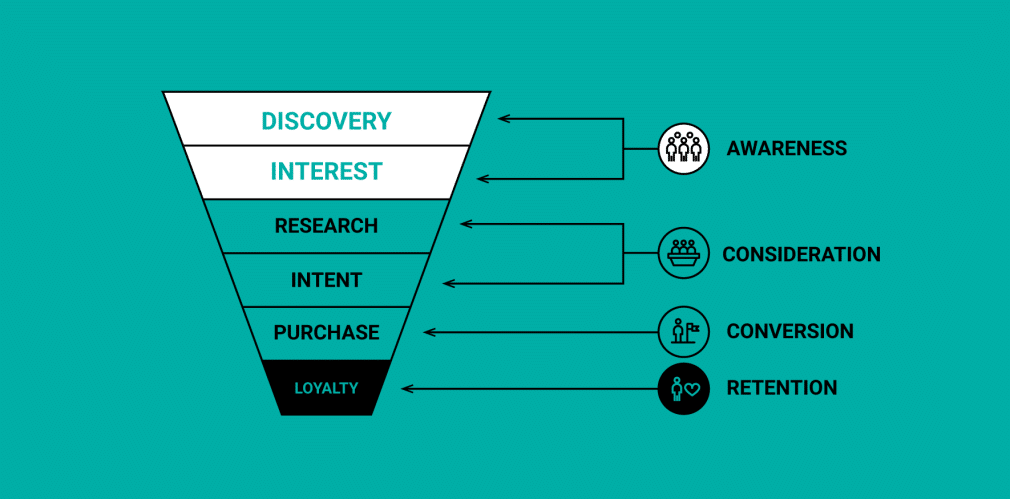
The typical stages of a customer acquisition funnel include:
Awareness
In this top-of-funnel stage, potential customers become aware of your brand, product, or service.
This often happens through:
- Advertising campaigns
- Content marketing
- Social media presence
- Search engine optimization
The goal is to reach as many relevant prospects as possible and pique their interest.
Consideration
As prospects move down the funnel, they begin researching and evaluating potential solutions to their problem or need.
At this stage, you want to:
- Provide educational content like how-to guides and FAQs
- Highlight your unique value proposition
- Offer product demos or free trials
Decision
In the decision stage, prospects are seriously considering making a purchase.
Key tactics include:
- Addressing objections and concerns
- Providing social proof through testimonials and case studies
- Offering incentives to encourage conversion
Conversion
This is when the prospect takes action and becomes a customer by making a purchase.
To optimize conversions:
- Streamline the checkout process
- Use behavior analytics to identify and remove friction points
- Provide excellent customer support
Retention
The funnel doesn’t end at conversion. Retaining customers and encouraging repeat purchases is crucial.
Strategies include:
- Personalized follow-up emails
- Loyalty programs
- Ongoing customer support and education
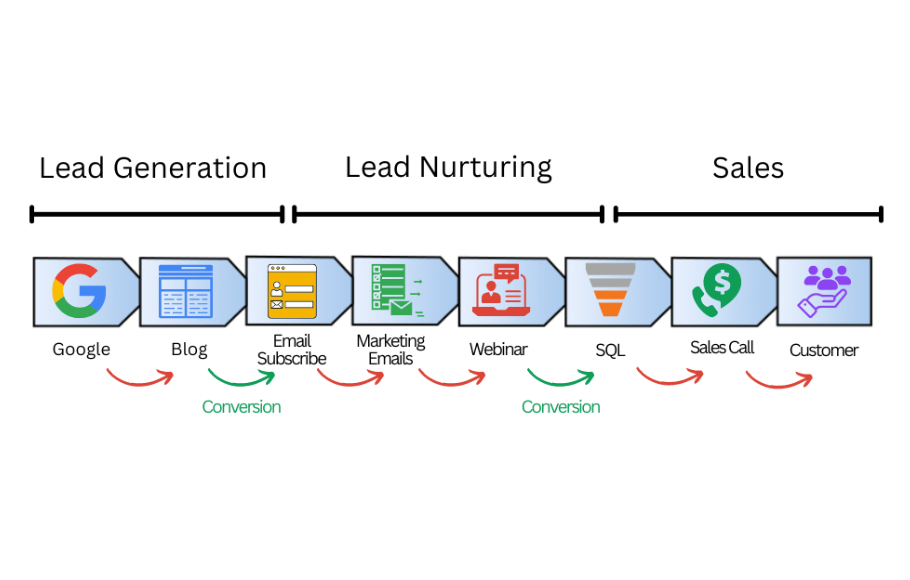
By mapping out and optimizing each stage of the funnel, businesses can create a more effective and efficient customer acquisition process. This allows for better allocation of marketing resources, improved conversion rates, and ultimately, sustainable business growth.
How can I optimize each stage of the customer acquisition funnel
To optimize each stage of the customer acquisition funnel, you need to focus on specific strategies tailored to the needs and behaviors of prospects at each level.
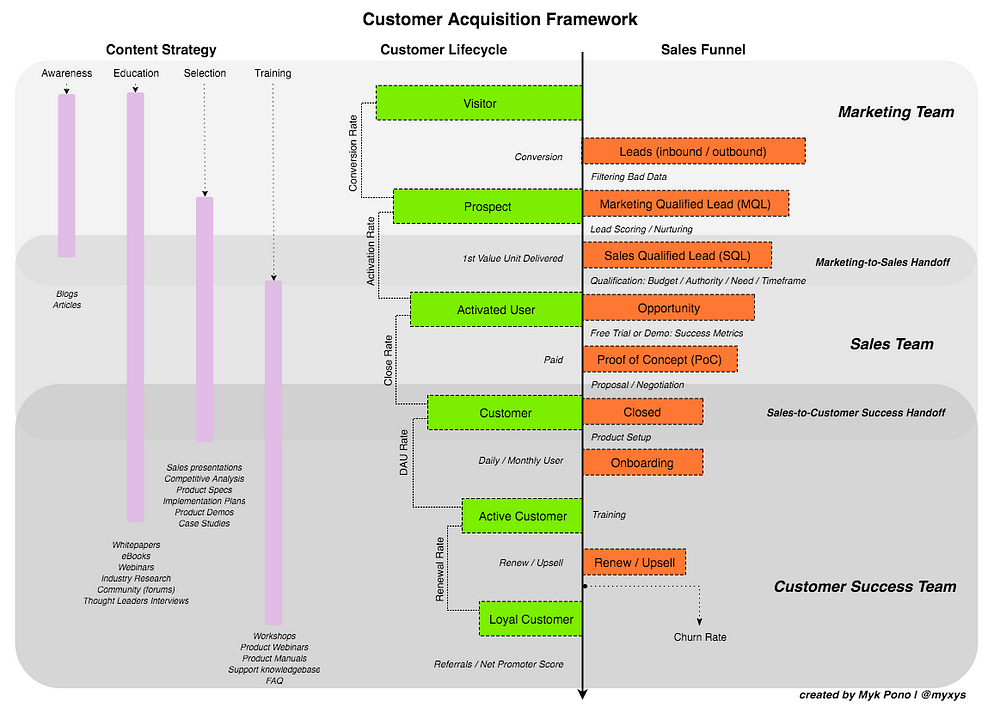
Here’s how you can optimize each stage:
Awareness Stage
At this top-of-funnel stage, your goal is to reach and attract potential customers:
- Develop a robust content marketing strategy to increase brand visibility
- Utilize search engine optimization (SEO) to improve organic search rankings
- Leverage social media platforms to expand your reach
- Implement targeted advertising campaigns to attract your ideal audience
Interest Stage
As prospects show interest, nurture them with:
- Educational content like blog posts, whitepapers, and webinars
- Personalized email marketing campaigns
- Engaging in social media content that encourages interaction
- Retargeting ads to keep your brand top-of-mind
Consideration Stage
At this point, prospects are evaluating your offering:
- Provide detailed product information and comparisons
- Offer free trials or demos to let prospects experience your product
- Use case studies and testimonials to build credibility
- Implement live chat support to answer questions promptly
Decision Stage
To encourage conversion:
- Create a sense of urgency with limited-time offers
- Offer incentives like discounts or free shipping
- Streamline the checkout process to reduce friction
- Use exit-intent popups to capture leads before they leave
Conversion Stage
Once a prospect becomes a customer:
- Send a welcome series of emails to onboard them effectively
- Provide excellent customer support to ensure satisfaction
- Offer tutorials or guides to help them get the most out of your product
Retention Stage
To keep customers and encourage repeat business:
- Implement a loyalty program to reward repeat purchases
- Use personalized email marketing for cross-selling and upselling
- Continuously provide value through exclusive content or offers
- Regularly seek and act on customer feedback
Optimization Strategies
To continually improve your funnel:
- Use analytics tools to monitor funnel performance and identify bottlenecks
- Conduct A/B testing on various elements like landing pages, email subject lines and CTAs
- Leverage marketing attribution models to understand which touchpoints are most influential
- Gather and analyze customer feedback to refine your approach
Remember, optimization is an ongoing process. Regularly review and adjust your strategies based on data insights and changing customer behaviors. By focusing on each stage of the funnel and using a data-driven approach, you can create a more effective and efficient customer acquisition process.
How do you measure the success of a customer acquisition funnel
To measure the success of a customer acquisition funnel, you need to track several key performance indicators (KPIs) and metrics at each stage of the funnel.
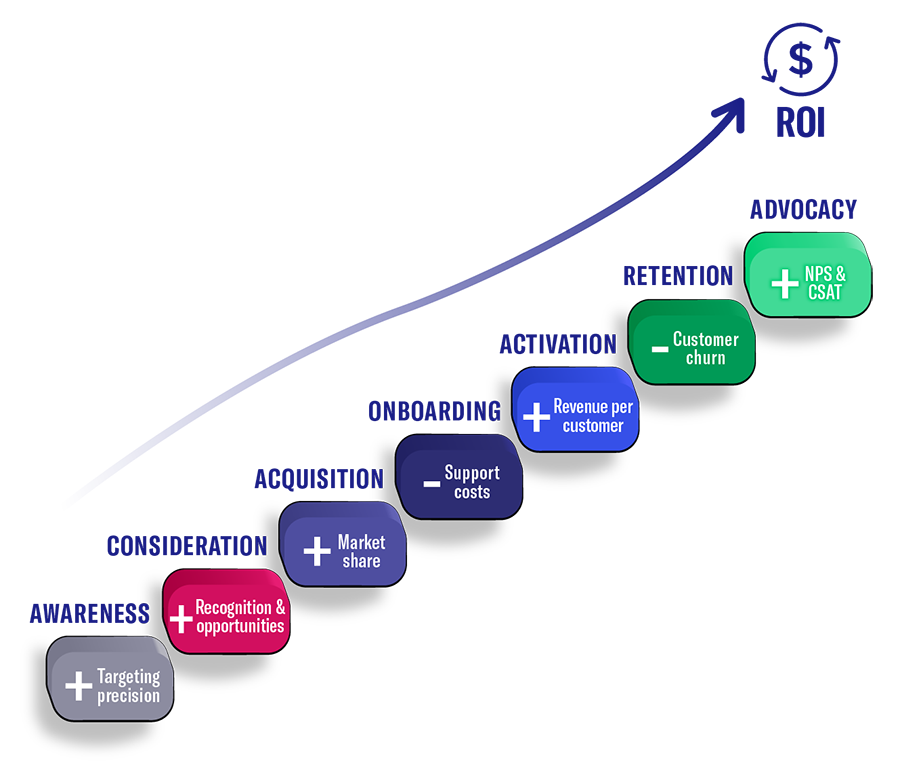
Here are some essential metrics to consider:
Conversion Rate
Conversion rate is a critical metric that measures the percentage of prospects who complete a desired action, such as signing up for a newsletter or making a purchase.
It can be calculated using the following formula:
CR = Number of Conversions / Total Number of Visitors × 100%
Tracking conversion rates at different stages of the funnel helps identify bottlenecks and areas for improvement.
Customer Acquisition Cost (CAC)
CAC measures how much it costs to acquire a new customer.
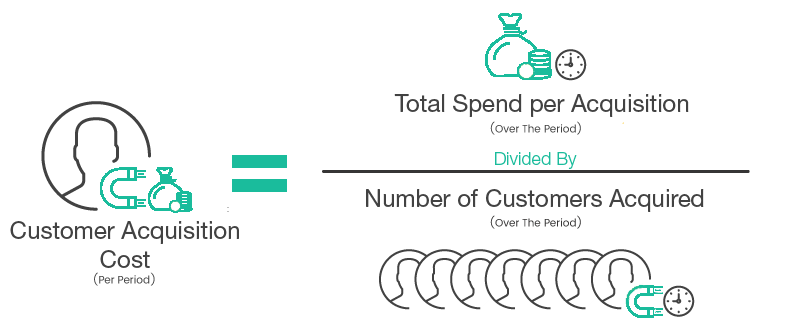
It’s typically calculated by dividing the total sales and marketing spend by the number of new customers acquired in a given period. A lower CAC indicates more efficient acquisition efforts.
Customer Lifetime Value (CLV)
CLV estimates the total revenue a customer is expected to generate throughout their relationship with your company.
Comparing CLV to CAC helps ensure that the cost of acquiring customers is justified by their long-term value.
Churn Rate
The churn rate measures the percentage of customers who stop doing business with your company over a specific period.
A low churn rate indicates better customer retention and satisfaction.
Traffic Sources
Analyzing the number of visitors from different channels (e.g., organic search, paid ads, social media) helps identify the most effective acquisition channels.
Time to Conversion
This metric measures the average time it takes for a lead to convert into a paying customer.
A shorter time to conversion often indicates a more efficient funnel.
Return on Investment (ROI)
ROI measures the profitability of your customer acquisition efforts by comparing the gain from investment to the cost of investment.
Click-Through Rate (CTR)
CTR measures the percentage of people who click on a specific link or call-to-action, indicating the effectiveness of your marketing messages and ad campaigns.
Funnel Leakage
This metric identifies where prospects are dropping off in the funnel, helping you pinpoint areas that need improvement.
To effectively measure the success of your customer acquisition funnel:
- Set up robust tracking and analytics tools like Google Analytics, CRM software, and specialized funnel analysis tools.
- Regularly review and analyze data to identify trends and patterns in customer behavior.
- Conduct A/B testing to optimize various elements of your funnel, such as landing pages, email subject lines, and CTAs.
- Benchmark your performance against industry standards and competitors.
- Use the insights gained to make data-driven decisions and continuously refine your acquisition strategies.
By consistently monitoring these metrics and adjusting your approach based on the data, you can optimize your customer acquisition funnel for better performance and increased revenue growth.
The Bottom Line: How To Optimize Customer Acquisition Funnel
To optimize a customer acquisition funnel, a company can follow these steps:
1/ Know your audience: Understanding your target audience is crucial to building an effective customer acquisition funnel.
2/ Focus on marketing fundamentals: This involves creating a clear value proposition, developing a strong brand identity, and using effective marketing channels.
3/ Find owned audiences: This involves leveraging existing customer data to identify and target high-value prospects.
4/ Create a targeted, niche approach: This involves tailoring your messaging and marketing efforts to specific segments of your target audience.
5/ Make customer service your top priority: Providing excellent customer service can help build trust and loyalty with customers, leading to repeat business and positive word-of-mouth.
6/ Use Hotjar: Website Heatmaps & Behavior Analytics Tools.
*** Optimizing a customer acquisition funnel can help create a seamless path from awareness to purchase, increase conversions and customer lifetime value, and reduce customer acquisition costs.

